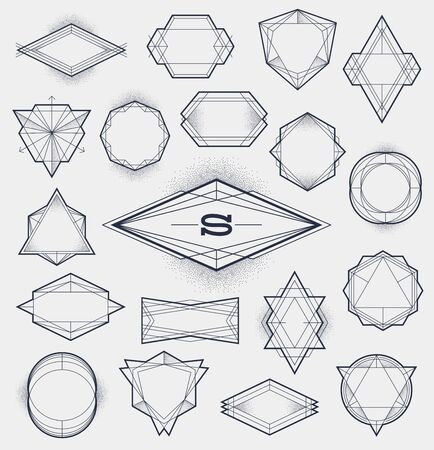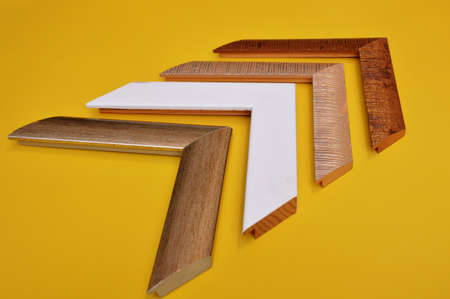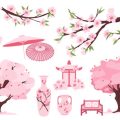Introduction to the Symbolism of Mirror Shapes and Frames
Mirrors, as both functional objects and decorative elements, have held a profound place in human culture, transcending mere utility to embody complex layers of meaning. In examining their significance, two distinct yet fascinating contexts emerge: the ancient principles of Feng Shui from the East, and the evolving traditions of British design. Both frameworks attribute deep symbolic value to mirrors—not just in terms of their reflective qualities, but also through the deliberate choices surrounding their shapes and frames. In Feng Shui, mirrors are often seen as powerful tools for manipulating energy flow within a space, with specific shapes and frames believed to attract prosperity, ward off negativity, or balance elemental forces. Meanwhile, in British interiors, mirrors serve not only aesthetic functions but also act as cultural signifiers, reflecting historical periods, social aspirations, and artistic trends through their forms and ornamentation. Understanding how shape and framing contribute to these meanings allows us to appreciate the mirror as more than an everyday object; it becomes a vessel of tradition, symbolism, and design philosophy that bridges East and West.
2. Mirror Shapes in Feng Shui: Meanings and Applications
In Feng Shui, mirror shapes are considered powerful tools for influencing the flow of qi (energy) within a space. The symbolic meanings attached to different mirror shapes—such as round, square, octagonal, and others—play a crucial role in determining how mirrors should be positioned and utilised. Each shape is thought to interact uniquely with its environment, promoting harmony or providing protection depending on its form.
Symbolic Meanings of Mirror Shapes in Feng Shui
| Mirror Shape | Symbolism in Feng Shui | Typical Application |
|---|---|---|
| Round | Represents unity, wholeness, and harmony. The absence of sharp edges symbolises smooth energy flow. | Ideal for living rooms and communal spaces to foster connection and peace. |
| Square | Embodies stability, earth element, and groundedness. Associated with balance and structure. | Suitable for offices or study areas where focus and order are desired. |
| Octagonal (Bagua) | Linked to the Bagua map; represents protection and auspiciousness. Balances eight life areas in Feng Shui. | Often used above doors or windows to ward off negative energy (sha qi). |
| Rectangular | Combines qualities of square (stability) with directionality. Promotes growth and expansion. | Commonly found in hallways or entryways to encourage forward movement. |
| Irregular/Abstract | Considered disruptive if not thoughtfully placed; may scatter energy unpredictably. | Avoided in classical Feng Shui; sometimes used for artistic effect with caution. |
The Role of Mirror Shapes in Energy Flow
The selection of a mirror’s shape directly affects how energy moves through a room. For example, round mirrors promote gentle circulation of qi by eliminating harsh angles that could ‘cut’ the energy stream. Square mirrors offer grounding effects, stabilising dynamic environments. Octagonal mirrors hold special significance due to their alignment with the Bagua—a fundamental tool in Feng Shui mapping—which allows them to both attract positive influences and deflect harmful ones when strategically placed. Understanding these distinctions ensures that mirrors not only serve decorative purposes but also act as active agents in cultivating a balanced atmosphere.

3. Frames and Materials: A Feng Shui Perspective
In Feng Shui, the frame of a mirror is not merely a decorative element but a crucial factor that influences the flow of energy within a space. The choice of material—be it wood, metal, or other substances—carries its own symbolic meaning and energetic properties. Wooden frames are associated with the Wood element in Feng Shui, representing growth, vitality, and upward movement. They are particularly suitable for spaces where one wishes to encourage renewal and harmony, such as living rooms or bedrooms. Metal frames, on the other hand, correspond to clarity, precision, and focus. Their reflective nature can help sharpen intentions and create a sense of order, making them ideal for offices or study areas.
Decorative motifs on mirror frames also play a significant role in setting the tone of an environment. In traditional Feng Shui practice, motifs such as waves or clouds may be used to evoke fluidity and ease, while geometric patterns might introduce stability and structure. Ornate British designs often incorporate floral or historical patterns, which can complement Feng Shui principles by symbolising prosperity and cultural continuity. However, it is essential to balance embellishment with simplicity; overly elaborate frames may disrupt the natural flow of energy and create visual clutter.
The placement and material of mirror frames should always be considered in relation to the overall interior scheme. For example, a wooden-framed mirror can soften sharp angles in modern British interiors, while metal frames may enhance contemporary spaces by adding brightness and definition. Ultimately, the frame serves as both boundary and connector—defining the mirror’s presence while integrating it harmoniously into its setting. By thoughtfully selecting frame materials and motifs in line with Feng Shui guidelines, one can cultivate a balanced atmosphere that supports well-being and reflects personal style within a distinctly British context.
4. British Mirror Design: Historical and Contemporary Perspectives
The evolution of mirror shapes and frames within British design reflects a fascinating interplay between cultural shifts, technological advancements, and changing aesthetic values. To understand how British mirrors have developed—and how their symbolism compares to Feng Shui traditions—it is essential to examine key historical periods, prevailing tastes, and the broader context of Western decorative arts.
Georgian Era: Symmetry and Classical Influences
The Georgian period (1714–1830) marked a time of refined elegance in British interiors, with mirrors serving as both functional objects and status symbols. Shapes were typically rectangular or oval, echoing neoclassical ideals of symmetry and proportion. Frames were often gilded, with motifs such as acanthus leaves or egg-and-dart patterns. The use of large pier glasses reflected the eras fascination with light enhancement and spatial illusion—a parallel to Feng Shui’s appreciation for mirrors’ ability to circulate energy.
Victorian Era: Ornate Detailing and Eclecticism
The Victorian period (1837–1901) saw a dramatic shift towards ornamentation and eclectic revival styles. Mirrors became more accessible due to industrial advances in glass production. Shapes diversified, including arched tops and elaborate forms. Frames were highly decorative—carved wood, gilt gesso, or even ebonised finishes—incorporating floral motifs, scrollwork, and Gothic or Rococo influences. These designs reflected the Victorian appetite for display and individuality, contrasting with the balanced restraint prized in Feng Shui practice.
Modern Period: Minimalism and Functionalism
Twentieth-century British design embraced modernism’s ethos of simplicity and utility. Mirrors took on streamlined geometric shapes—circles, rectangles, squares—with frames often reduced to minimal metal or left frameless altogether. Designers such as Terence Conran championed clean lines and functional beauty, aligning with contemporary British tastes for understated sophistication. In contrast to earlier eras, symbolism shifted from status or ornamentation towards clarity, openness, and practical enhancement of space.
Comparative Overview of Mirror Design in Key Periods
| Period | Typical Shapes | Frame Characteristics | Cultural Influences |
|---|---|---|---|
| Georgian | Rectangular, Oval | Gilded, Classical Motifs | Neoclassicism, Enlightenment |
| Victorian | Arched, Elaborate Forms | Carved Wood, Gilt Gesso, Ornate Detailing | Eclectic Revivals, Industrialisation |
| Modern | Circular, Rectangular, Square | Minimalist Metal or Frameless | Modernism, Functionalism |
This historical overview highlights how British mirror design has continually adapted to reflect shifting societal values—ranging from classical order through Victorian exuberance to modern minimalism. Each era’s approach to mirror shapes and framing reveals underlying attitudes toward space, light, self-image, and cultural identity within the UK context.
5. Comparative Symbolism: Feng Shui Versus British Interpretations
Exploring the symbolism and practical applications of mirror shapes and frames in both Feng Shui and British design contexts reveals fascinating parallels and contrasts. While both traditions value mirrors for their transformative effects on space, their interpretations and uses differ significantly due to cultural philosophies, historical development, and aesthetic priorities.
Shape Symbolism: Circles, Squares, and Beyond
In Feng Shui, shape is deeply tied to elemental symbolism and energy flow. Circular mirrors are prized for representing unity, wholeness, and continuous energy movement (Qi), often used to harmonise spaces or invite positive influences. Square or rectangular mirrors symbolise stability and grounding, aligning with the Earth element. Conversely, British design historically favours practicality but also reflects symbolic undertones. The round mirror, particularly popular in Georgian and Victorian eras, evokes elegance and a subtle nod to eternity—though less overtly spiritual than in Feng Shui. Rectangular mirrors are most common in Britain, valued for their ability to reflect light efficiently and fit seamlessly into architectural proportions rather than for metaphysical reasons.
Frame Interpretation: Materiality and Meaning
Feng Shui places great emphasis on frame materials and colours. Wooden frames may evoke growth (Wood element), gold finishes attract wealth (Metal element), while red lacquered frames stimulate vibrancy (Fire element). In contrast, British approaches prioritise craftsmanship and period style: ornate gilt frames signal opulence and heritage; minimalist wooden or metal frames suit modern tastes. Here, the frame’s role is more about stylistic coherence or social status rather than energetic manipulation.
Functional Purposes: Beyond Reflection
Mirrors in Feng Shui serve clear functional purposes—redirecting negative energy (Sha Qi), expanding perceived space, or doubling auspicious symbols for enhanced effect. Their placement and orientation are governed by strict rules intended to cultivate well-being. In British interiors, mirrors were historically used to amplify natural light before electric illumination became widespread—a practical concern that shaped mirror size and positioning. Over time, they have also become decorative focal points or means of expressing personal taste.
Areas of Overlap and Divergence
The primary overlap lies in the recognition of mirrors as powerful tools for transformation—be it energetic or spatial. Both cultures appreciate the ability of mirrors to alter perception, create atmosphere, and reflect beauty. However, the divergence is clear in motivation: Feng Shui is fundamentally spiritual and prescriptive, imbuing mirrors with layered meanings tied to health, fortune, and harmony. British design interprets mirrors through a lens of functionality, aesthetics, and evolving trends, with symbolism often implicit or secondary.
This comparative analysis highlights how mirror shapes and frames act as cultural signifiers—each tradition shaping its own narrative around these everyday objects while occasionally intersecting in shared appreciation for their visual impact.
6. Blending Traditions: Integrating Feng Shui Concepts into British Interiors
Understanding Cultural Sensitivities
Incorporating Feng Shui principles into British interiors requires a thoughtful approach that respects both the symbolism of the East and the aesthetic values of the West. British homes, often celebrated for their blend of tradition and modernity, provide a unique canvas for integrating Eastern philosophies without compromising local sensibilities. Rather than imposing unfamiliar motifs, the key is to translate Feng Shui’s core ideas—such as harmony, balance, and energy flow—into elements that resonate with British tastes.
Selecting Appropriate Mirror Shapes
While Feng Shui ascribes specific meanings to mirror shapes—round mirrors symbolising unity and rectangular mirrors representing stability—their integration into British design should align with prevailing trends. For example, round mirrors can be used to soften the formality of Victorian or Georgian interiors, while rectangular or square frames may complement contemporary or minimalist spaces. Opting for subtle shapes ensures that the symbolic intent does not overwhelm the established character of the home.
Choosing Frames that Respect Both Cultures
The choice of frame is equally important in blending traditions. In Feng Shui, wooden frames evoke growth and natural energy, while metallic frames suggest clarity and precision. Within a British context, frames can be selected to echo architectural details or period features—think oak for country cottages or brass for art deco flats—while subtly supporting positive Qi (energy) as advocated by Feng Shui.
Positioning Mirrors Thoughtfully
British homes often feature fireplaces, bay windows, and narrow corridors. Placing mirrors opposite windows can amplify natural light, echoing both local design priorities and Feng Shui’s emphasis on enhancing energy flow. It is essential, however, to avoid placements that reflect clutter or sharp corners, as these are considered disruptive in both cultures. Instead, focus on locations that foster openness and calm.
Adapting Symbolism to Local Trends
Embracing current British design trends—such as maximalist wallpapers, mid-century furniture, or biophilic accents—can further harmonise Feng Shui symbolism with contemporary living. For instance, pairing a circular mirror with botanical prints aligns the ancient principle of interconnectedness with Britain’s renewed interest in nature-inspired décor.
Cultivating a Balanced Atmosphere
Ultimately, successful integration hinges on balance: honouring Feng Shui’s wisdom while remaining attuned to British traditions and evolving tastes. Through careful selection of mirror shapes and frames, and by considering placement within the home’s architectural context, it is possible to create interiors that are both culturally respectful and deeply harmonious.
7. Conclusion: Reflections on Cultural Symbolism and Design Practice
In examining the symbolism of mirror shapes and frames through both Feng Shui principles and British design sensibilities, several key insights emerge. Understanding the cultural meanings associated with mirrors—whether it be the flow of energy in Feng Shui or the narrative and historical resonance in British interiors—enables designers and homeowners to make more informed and intentional choices. Recognising that round mirrors can evoke harmony and unity, or that ornate frames might carry a sense of heritage and sophistication, empowers individuals to create spaces that are not only visually appealing but also supportive of psychological wellbeing. By thoughtfully integrating symbolic considerations into design practice, there is potential to enrich daily life, foster positive atmospheres, and respect both global traditions and local character within British contexts. Ultimately, embracing the layered meanings behind mirror shapes and frames transforms them from mere decorative objects into purposeful elements that reflect personal values and contribute to holistic living environments.

